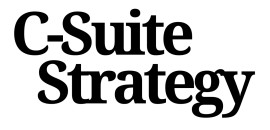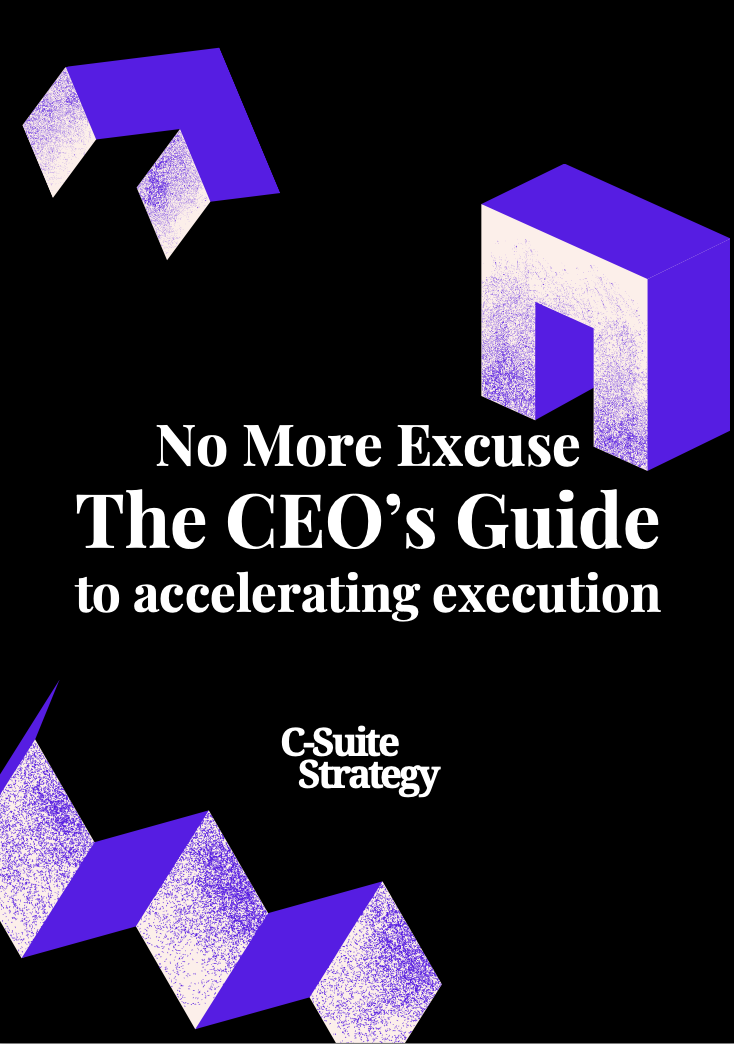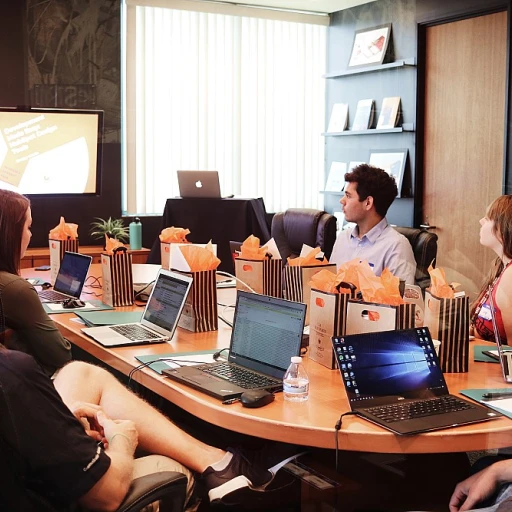Understanding the Core Business Strategy
Exploring Key Strategic Questions
Understanding your core business strategy begins with the art of asking the right questions. The very foundation of your leadership depends on this critical step, as it enables you to uncover insights that will propel your organization forward. Senior leaders must frequently engage in strategic questions to ensure alignment with the company’s overarching goals.- Define the Purpose: Leaders should constantly revisit the company’s mission, examining if it aligns with the current strategic landscape. This introspection will help prioritize initiatives that support the organization's long-term vision.
- Evaluate Strategic Fit: Ask yourself whether your business model fits the rapidly changing market. Ensure that your strategic initiatives reflect the dynamic nature of your industry and are supported by a clear direction.
- Encourage Continuous Improvement: Promote a culture where innovation and adaptability thrive. Identify areas for growth and improvement by involving team members across all levels in strategic discussions. Their insights can lead to improved decision-making and effective risk management.
Assessing Market Position and Competition
Evaluating Market Dynamics and Competitive Edge
Senior leaders and CEOs need to continuously evaluate their organization's market position and competitive landscape. This evaluation isn't just about keeping an eye on rivals but comprehensively understanding the market's dynamics. Knowing who your competition is, what they offer, and how they operate will help in refining your own strategic goals.
Asking the right strategic questions can illuminate where your organization stands. Consider what differentiates your products or services from those of your competitors. How does your organization leverage these differences to propel growth? Moreover, assess the competitive threats and opportunities in the current market. A solid grasp of market trends can play a crucial role in guiding the decisions on resource allocation and innovation.
- What unique value does our company deliver to customers that our competitors do not?
- Are there untapped markets where our offerings have a strategic advantage?
- How is digital transformation influencing our competitive position?
- What are the potential risks in our market approach, and how can risk management strategies mitigate them?
Understanding these factors will enhance both short-term resilience and long-term sustainability. Creating a dynamic feedback loop within your team that fosters continuous improvement and adaptability can be invaluable. Harnessing a leadership system that keeps pace with these market changes is pivotal to maintaining competitiveness and ensuring that your organization remains a leader in its field.
Evaluating Financial Health and Resource Allocation
Scrutinizing Resource Deployment and Fiscal Health
Resource allocation is pivotal to the longevity and prosperity of any organization. For senior executives, conducting a comprehensive evaluation of financial health is non-negotiable. It's essential to ask probing questions regarding the current financial metrics and delve deep into both short-term and long-term fiscal strategies.
An organization's financial health can only thrive when adequate attention is paid to key performance indicators and resource distribution. Leaders must explore questions like:
- Are current resources aligned with our strategic goals?
- What are the unforeseen fiscal risks that could impede our progress?
- Can our current capital structure support our aspirations for growth?
These strategic questions help leaders align their financial blueprint with their core business strategy. By focusing on healthy metrics, c-suite executives can identify areas where cost optimization or investment realignment may be required.
Empowering Team Members in Decision Making
Empowerment within the workplace is critical, particularly when considering strategic decisions that impact the entire organization. Senior leaders can facilitate greater employee engagement by fostering an environment of transparency and open communication. Encouraging everyone on the team to raise good questions will lead to more informed and holistic decision making.
As a CEO, consider addressing:
- How can we incentivize strategic thinking among employees?
- Does our decision-making process reflect diversity in perspectives?
- Are we equipped to support leadership styles that encourage employee wellbeing?
Such reflections ensure that strategic initiatives are well-rounded and incorporate diverse insights from various team members, ultimately bolstering the organization’s culture of continuous improvement.
For further reading on how senior executives are shaping their initial strategies in finance and resource allocation, consider exploring our detailed post on mastering the first 100 days as a c-suite leader. This resource will provide more insights into achieving effective alignment and fostering a culture of accountability.
Driving Innovation and Adaptability
Fueling Organizational Change and Innovation
In the rapidly evolving business world, driving innovation and adaptability are crucial for any organization aiming to maintain a competitive edge. As senior leaders, cultivating a culture of innovation within your company is not just beneficial but essential. Consider how a robust innovation strategy can impact employee engagement and support long-term company goals.
Begin by empowering team members at every level to voice their ideas and partake in strategic initiatives. This involves fostering a company culture where questions and open dialogue are encouraged. Asking good questions can lead to breakthrough innovations, as they challenge the status quo and push boundaries.
Add to this the necessity of digital transformation in enhancing your organization’s adaptability. Leadership must prioritize continuous improvement in processes and systems, enabling the organization to react swiftly to market changes.
Incorporate strategic decision-making processes that involve input from various teams, ensuring diverse perspectives inform innovative approaches. This not only strengthens the organization’s adaptability but also aligns with career growth aspirations of employees who yearn for innovative work environments.
Effective risk management is also paramount. As the business landscape changes, so do the risks. Senior management must assess potential risks associated with innovation and allocate resources strategically to fuel promising projects while mitigating downsides.
Ultimately, innovation and adaptability are closely tied to leadership style. Leaders must demonstrate a willingness to embrace change and facilitate a work-life balance that keeps employees motivated while steering the organization toward sustained success.
Enhancing Organizational Culture and Leadership
Cultivating an Environment for Growth
Senior leaders play an essential role in shaping company culture, which significantly impacts employee engagement, leadership development, and organizational success. Understanding the nuances of your organization's culture and aligning it with strategic goals is critical. Here are some questions to spark reflection and guide strategic decision making:- How does our company's leadership style reflect and influence our organizational culture? Reflecting on leadership style is crucial for leaders, as it dictates how senior management drives the company forward. Consider whether your approach fosters trust, encourages transparency, and enhances employee wellbeing.
- What steps can we take to enhance employee engagement? Engaged employees are more productive and innovative. By prioritizing work life balance and opening channels for feedback, leaders can improve overall job satisfaction and commitment.
- In what ways does our culture foster continuous improvement and adaptability? With digital transformation reshaping industries, it's vital to instill a culture that embraces change. Encouraging team members to adopt a growth mindset helps in staying competitive and resilient.
- Are we providing opportunities for career growth and development? Support career progression by identifying and nurturing talent. Personalized career paths and development programs can lead to long-term success, ensuring key positions are filled by capable leaders.
- How can we maintain our cultural strengths while mitigating risks? Regularly evaluating your organization’s culture will help identify areas of improvement. This proactive approach helps in strengthening resilience against potential challenges.
Ensuring Sustainable Growth and Long-Term Vision
Securing a Sustainable Future
Creating a roadmap for sustainable growth and a long-term vision often starts with asking the right questions. How does your leadership style facilitate strategic foresight? Does your team engage in continuous improvement? Questions such as these can help leaders steer their company's trajectory towards ongoing success.
The demands on senior management in today's dynamic business environment necessitate a robust approach to decision making. Leaders must embody a culture that prioritizes digital transformation alongside risk management, ensuring the organization remains future-proof. Strategic questions can guide senior leaders to anticipate changes and align resources effectively.
In fostering a high-performance organization, senior leaders must actively listen to their team members. Employee engagement directly correlates with the company culture you cultivate. When employees feel their career growth and wellbeing are prioritized, it reflects positively on strategic work outcomes and organizational longevity.
The ceo and senior leaders need to perfectly balance their time and resources between sustaining day-to-day operations and planning for future success. This includes nurturing a leadership culture that evolves with emerging market demands while maintaining clear communication with their teams.
To conclude, embarking on this journey of securing a sustainable future demands leaders frequently assess their strategic goals against the ever-shifting landscape. Asking good questions can be the key to unlocking your organization's potential and ensuring its longevity in a competitive world.













